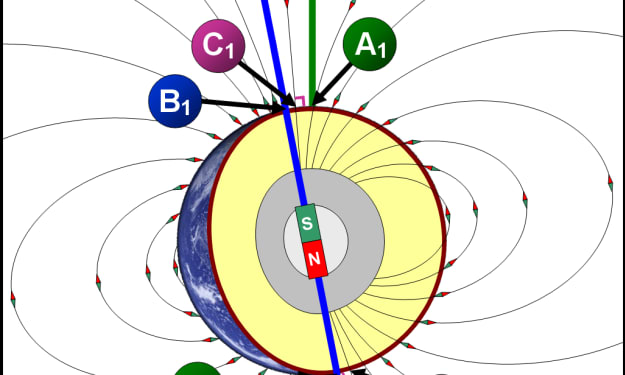Nuclear Fusion - A New Design for Peaceful Power?
Pulsed injections of tungsten bullets into deuterium capsules passes initial tests, achieving world-first fusion result and proving unique new target technology - fact or fiction?

A UK company, First Light Fusion, has developed a new technique for nuclear fusion. This new technique could potentially provide a cleaner and more efficient form of energy than traditional forms of nuclear fission power.
The First Light design looks like it could be a much simpler concept than the current leader in the ‘race’ to clean nuclear power.
Current race leader
The latest tests at the Lawrence Livermore National Ignition Facility have shown great promise, but the design and configuration requires 192 high power lasers and a building as large as three football stadiums.
Nevertheless, the test results are ahead of those achieved from older Tokomak (Russia, US) and Torus (UK, EU JET) designs which use large high power magnets and other tricks to ignite and confine a hot plasma. To be fair, these have been showing great promise, but the confinement challenges are significant.

The First Light new entrant
First Light, the latest entrant in the race has a novel concept of pulsed fusion.
Their approach is to compress the fuel within a target using a tungsten projectile travelling at very high speed, as opposed to utilizing sophisticated, energy-hungry and costly lasers (NIF) or superconducting magnets (Tokomak/Torus) to establish or maintain the conditions for fusion.
The target design in First Light’s technique is what makes it possible, concentrating the energy of the projectile while imploding the fuel to temperatures and densities that produce fusion.
The technology is based on the principle of inertial confinement fusion (ICF). ICF is a process where a pellet of fuel is compressed by an imploding shell to create conditions for nuclear fusion.
Tungsten is an ideal material for use in ICF because it has a very high melting point and can withstand the extreme temperatures and pressures involved in the process.
The First Light Fusion team has been able to successfully compress deuterium using their unique implosion system and tungsten projectiles.
Design details
To achieve this fusion result, First Light employed its big two-stage hypervelocity gas gun to fire a tungsten projectile with the fusion fuel at a deuterium target. The projectile attained a speed of 6.5 kilometers per second before impact as it accelerated through the advanced target design producing a shock wave of over 70 km per second as it imploded.
The targets have two design components: an amplifier and a fuel capsule. The amplifier increase the projectile impact pressure and the fuel implodes much faster than the original impact (6.5 km/s becomes 70 km/s).
Deuterium-deuterium fusion results, producing a stable helium isotope and a neutron, or tritium and a proton. The lithium (the cooling fluid blanket) reduces to tritium when it’s bombarded with neutrons from the deuterium fusion. The tritium may be consumed in a follow-up deuterium-tritium fusion reaction that emits another neutron and a helium isotope. Each fusion reaction releases energy.
“One of the biggest engineering challenges is to produce enough tritium so the reaction is self-sufficient,” Hawker told us. “Tritium is radioactive, and has a half life of over 12 years. It’s the biggest safety hazard, and we can minimize levels to as low as 100 grams.” — First Light CEO, Nick Hawker, in an interview with TheRegister
Capturing and using the fusion energy
This fusion energy would be absorbed by molten lithium flowing through the fusion chamber (in a similar way to which liquid sodium is used to cool some designs of fission reactors). The lithium flows out and through a heat-exchanger transferring its heat to water, generating pressurised steam and driving a conventional turbine generator.
Pulsing
A projectile would be fired every 30 seconds, with a fresh deuterium capsule, pulsing the fusion. This is different to the Tokomak designs which seek to achieve self-sustaining ignition, just as in a furnace. The NIF has yet to solve the pulsing/replenishment problem.
First Light’s power plant design involves the target being dropped into the reaction chamber and the projectile launched downwards through the same entrance, so it catches up with and impacts the target at the right moment.
The impact is focused and amplified by First Light’s advanced target technology, and a pulse of fusion energy is released. That energy is absorbed by the lithium flowing inside the chamber, heating it up. The flowing liquid protects the chamber from the huge energy release, sidestepping some of the most difficult engineering issues in other approaches to fusion. Finally, a heat exchanger transfers the heat of the lithium to water, generating steam that turns a turbine and produces electricity. — First Light website
The advantage of this new approach is that — and I’m speculating here — no complex, energy-hungry magnetic field is required to confine a plasma because there is none, at least not in the conventional Torus sense.
First Light process visualisation
The First Light Fusion team is now working on scaling up their system to create a prototype power plant. If successful, this could be a major breakthrough in the development of clean, renewable energy.
Costs
Well, the company are claiming near cost-parity with renewables. That would have to be the benchmark for today, wouldn’t it? The claim is a of a Levelised Cost Of Energy (“LCOE”) of under $50 / MWh. This would make it the cheapest source of grid baseload power.
Does it work?
Here’s an extract from their press release confirming that nuclear fusion has been achieved:
First Light Fusion (First Light), the University of Oxford fusion spin-out, today confirms it has achieved fusion. The UK Atomic Energy Authority (UKAEA) has independently validated the result.
This is the first time fusion has been achieved using the unique targets developed by First Light, and the corresponding projectile technology. First Light’s mission is to solve the problem of fusion power with the simplest machine possible. Projectile fusion is a new approach to inertial fusion that is simpler, more energy efficient, and has lower physics risk. First Light has achieved fusion having spent less than £45 million, and with a rate of performance improvement faster than any other fusion scheme in history.
But I am wondering about all the deuterium pellets that will be needed — cost, manufacture, energy input?
It sounds a bit like shovelling coal into a furnace.
And it’s a standing joke that since 1949 the achievement of practical nuclear fusion power has always been 50 years away.
Maybe the light at the end of the tunnel is fusion power coming our way, but now it might be on less than a 50 year timescale, with a cheaper ticket and a simpler design.
I certainly hope so — I’ve been waiting over 50 years for this particular train and I can’t wait much longer.
Notes
- I couldn’t find any mention of tungsten in the company’s website announcements. However, the metal was mentioned in that interview with TheRegister.
- Deuterium (hydrogen-2) is a stable isotope of hydrogen and occurs naturally at about 1 atom in 6420 atoms of hydrogen.
***

***
Canonical: This story was first published in Medium on 11 April 2022
About the Creator
James Marinero
I live on a boat and write as I sail slowly around the world. Follow me for a varied story diet: true stories, humor, tech, AI, travel, geopolitics and more. I also write techno thrillers, with six to my name. More of my stories on Medium






Comments
There are no comments for this story
Be the first to respond and start the conversation.